10 Thai Auspicious Desserts Essential for Thai Weddings

Rating: 5/5 (1 votes)
Bangkok attractions
Attractions in Thailand
10 Thai Auspicious Desserts Essential for Thai Weddings A Thai wedding is not only a significant ceremony reflecting the love and bond between the bride and groom but also a showcase of traditions and culture passed down through generations. An essential element of a Thai wedding is the "auspicious Thai desserts," which are not only beautiful and delicious but also carry meanings that symbolize good fortune, prosperity, and success for the couple. In this article, we will introduce you to 10 Thai auspicious desserts that are a must-have at Thai weddings and the profound meanings behind each one.
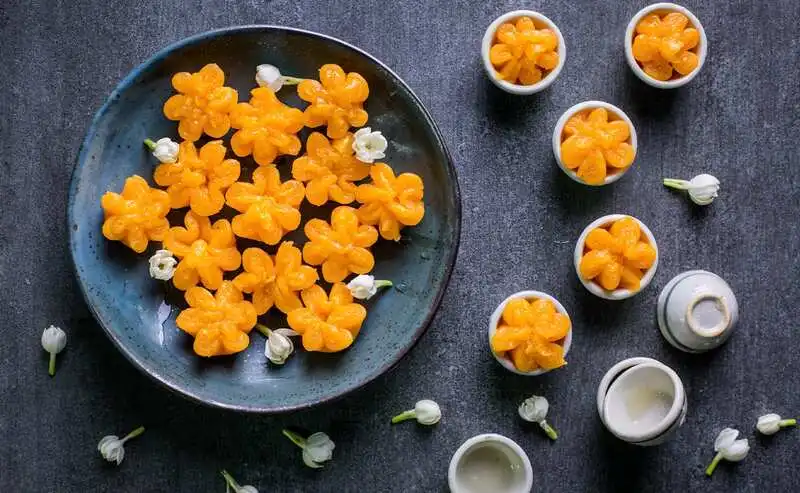
1. Thong Yip (Pinched Gold Egg Yolks) Meaning: Thong Yip symbolizes wealth and good fortune. It is believed that when the bride and groom receive Thong Yip at their wedding, it will bring them an abundance of wealth. Thong Yip is delicately crafted from egg yolks and syrup, folded into beautiful flower-like shapes, reflecting meticulous care and attention to detail.
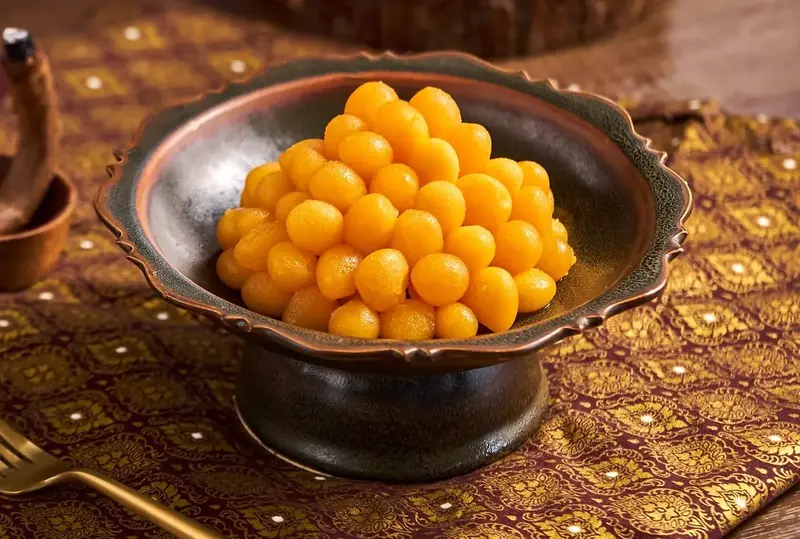
2. Thong Yod (Golden Drops) Meaning: Thong Yod represents wealth and abundance. The name suggests a continuous flow of wealth, as if money and gold are being dropped into one’s pocket. Including Thong Yod in a wedding ceremony is a way to wish the couple financial prosperity and a life filled with abundance.
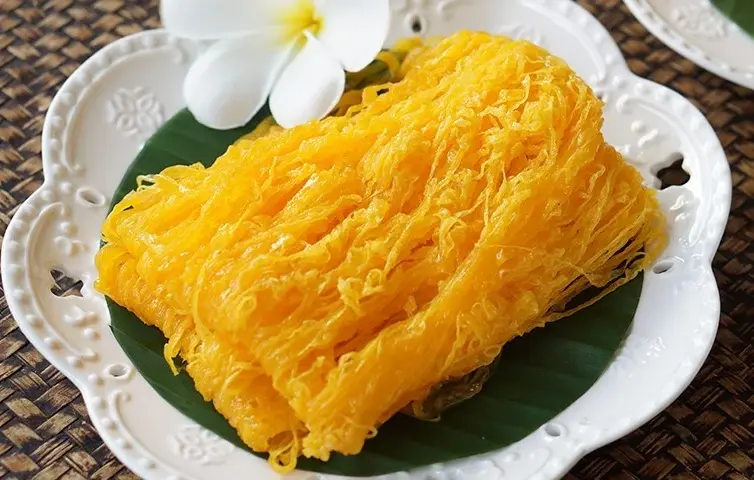
3. Foi Thong (Golden Threads) Meaning: Foi Thong signifies a long-lasting and enduring marriage. The delicate and continuous threads of this dessert symbolize an everlasting bond. Gifting Foi Thong at a wedding is a blessing for the couple to have a long and happy marriage.
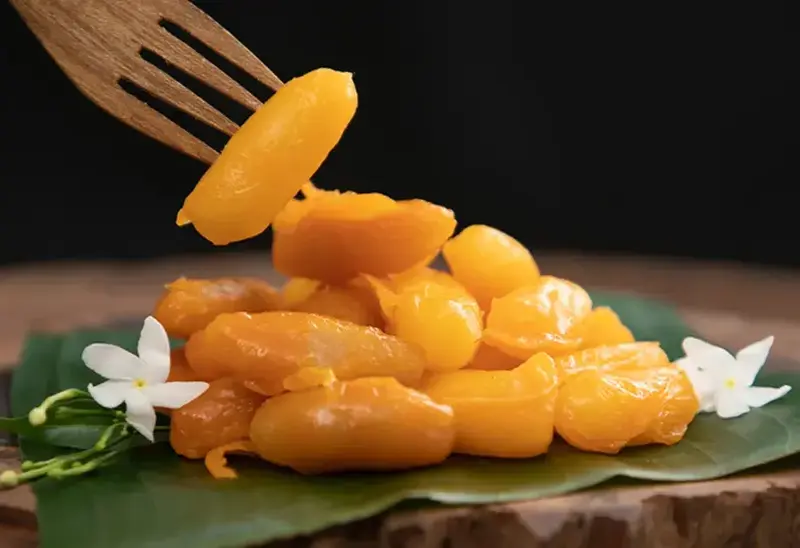
4. Med Kanoon (Jackfruit Seeds) Meaning: Med Kanoon symbolizes support and assistance in all aspects of life. The name of the dessert itself suggests the idea of being supported and uplifted by others. Receiving Med Kanoon at a wedding is a blessing for the couple to have help and support throughout their life.
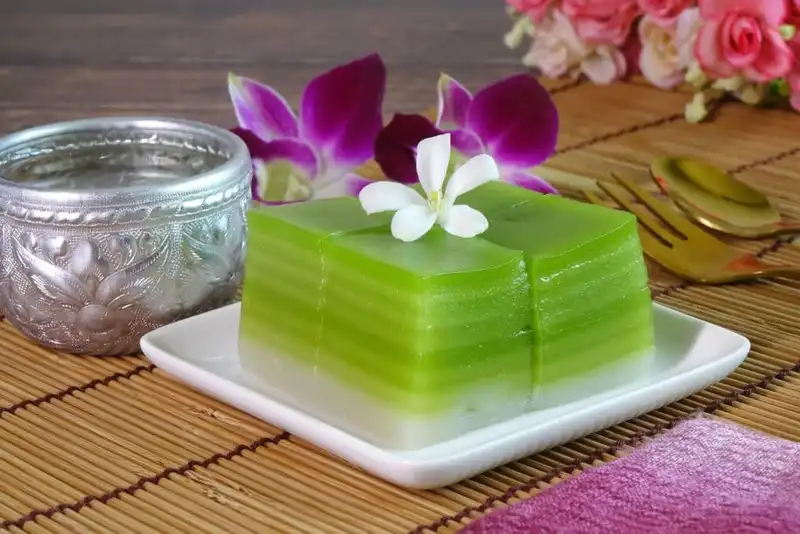
5. Khanom Chan (Layered Dessert) Meaning: Khanom Chan represents progress and advancement in both career and personal life. The multiple layers of this dessert, carefully stacked on top of each other, symbolize growth and success. Serving Khanom Chan at a wedding is a way to wish the couple success and continuous progress in life.
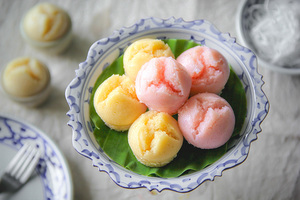
6. Khanom Thuay Fu (Steamed Cupcakes) Meaning: Khanom Thuay Fu represents prosperity and flourishing in married life. The fluffy and light texture of this dessert symbolizes a prosperous and joyous life. Offering Khanom Thuay Fu at a wedding is a wish for the couple to have a life filled with prosperity and happiness.
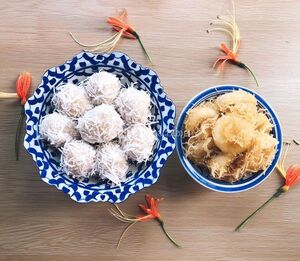
7. Khanom Tom (Coconut Rice Balls) Meaning: Khanom Tom symbolizes purity and honesty. Made from glutinous rice flour, filled with sweetened coconut, and boiled in hot water, this dessert represents the pure and sincere love between the couple. Giving Khanom Tom at a wedding is a wish for the couple to remain pure-hearted and honest with each other.
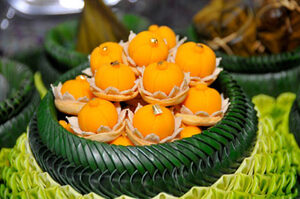
8. Ja Mongkut (Golden Crown) Meaning: Ja Mongkut represents success and noble leadership. Shaped like a small crown, this dessert is made from egg yolk and sugar, adorned with gold leaf. Giving Ja Mongkut at a wedding is a way to wish the couple great success and leadership in life.
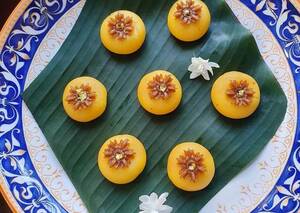
9. Saneh Jan (Golden Sweet) Meaning: Saneh Jan symbolizes charm and being beloved by everyone. This small, round dessert has a golden hue and a fragrant scent of sandalwood. Offering Saneh Jan at a wedding is a wish for the couple to be charming and loved by those around them.
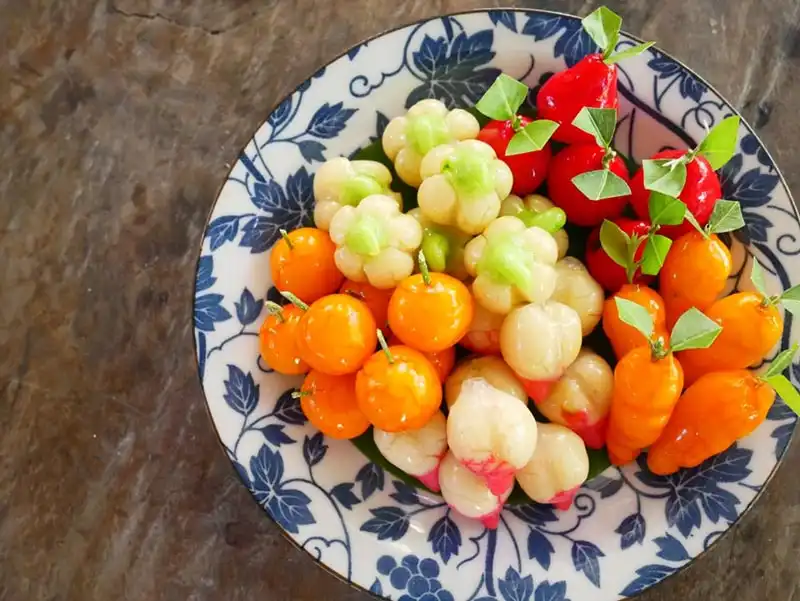
10. Luk Chup (Miniature Fruit-Shaped Desserts) Meaning: Luk Chup represents completeness and prosperity. These miniature fruit-shaped desserts are made from sweetened mung bean paste, coated in jelly or gelatin. Giving Luk Chup at a wedding is a way to wish the couple a life filled with completeness and prosperity.
Preparing auspicious Thai desserts for a wedding requires attention to beauty and the auspicious meanings they convey. Presenting these desserts on elegant trays, such as silver, gold, or glass trays, enhances the overall aesthetic and creates a luxurious atmosphere. The arrangement of the desserts should be orderly, and adding fresh flowers or pandan leaves can enhance the presentation with fragrance and freshness.
Auspicious Thai desserts are not just about taste and beauty; they also carry deep cultural and symbolic meanings. Each dessert reflects beliefs in good fortune, prosperity, and enduring relationships. Giving these desserts at a wedding is a way to pass on blessings and good wishes from one generation to the next.
Despite changing times, the significance of auspicious Thai desserts in weddings remains steadfast. Preserving the tradition and presentation of these desserts at weddings not only shows respect for Thai culture but also ensures the continuity of these values and blessings in Thai society for future generations.
Thai weddings are rich in traditions and rituals that have been passed down through generations, reflecting the values, beliefs, and cultural heritage of the Thai people. These ceremonies are not just a union of two individuals but also a binding of two families, filled with symbolic acts that honor the past, celebrate the present, and look forward to the future.
The Engagement Ceremony (Khan Mak) The traditional Thai wedding process begins with the engagement ceremony, known as "Khan Mak." This is when the groom’s family formally asks for the bride’s hand in marriage. The groom’s family presents trays of gifts, including gold, money, and auspicious fruits, to the bride’s family as a symbol of respect and sincerity.
The Water Pouring Ceremony (Rod Nam Sang) The water pouring ceremony is the heart of a traditional Thai wedding. The bride and groom sit together at an altar, and honored guests and elders pour water from a conch shell over the couple's hands while offering blessings for their future. This ritual signifies love, unity, and the well-wishes of those in attendance.
The Blessing with Holy Water During the blessing ceremony, Buddhist monks chant prayers and sprinkle holy water on the bride and groom’s heads. This act is believed to ward off evil and bring good fortune to the couple's married life.
The Wrist-Tying and Ring Exchange Ceremony After the water pouring ceremony, the elders tie sacred threads or cloth around the wrists of the bride and groom, symbolizing a bond of stability and permanence. The couple then exchanges rings, signifying their formal commitment to each other according to tradition.
The Bed Preparation Ceremony Another important ritual in a Thai wedding is the bed preparation ceremony, which takes place in the evening. The couple is led to their prepared bedroom by an older couple who have had a long and happy marriage. They perform rituals and offer advice on married life, symbolizing the best wishes for a harmonious and prosperous union.
The Wedding Feast and Celebration After the religious and traditional ceremonies, a wedding feast and celebration are held to commemorate the marriage. Family and friends are invited to join in the festivities, which typically feature Thai foods with auspicious meanings, such as traditional Thai desserts, sticky rice, and other dishes symbolizing abundance and prosperity.
Thai wedding traditions are a blend of ancient religious and cultural beliefs. The various rituals not only reflect the love between the bride and groom but also symbolize the respect and unity between two families. Preserving and passing down these traditions is essential in maintaining the unique identity and cultural heritage of the Thai people.
Comment
| Keyword (Advance) |
 Facebook Fanpage
Facebook Fanpage



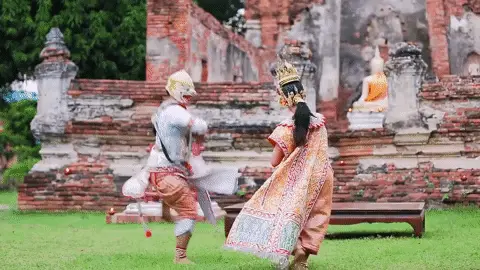










 Category:
Category:  Group:
Group:  Art, Culture and Heritage
Art, Culture and Heritage Historical Sites and Monuments(
Historical Sites and Monuments( Landmarks and Memorials(
Landmarks and Memorials( Royal Palace(
Royal Palace( Art, Craft Centres, Tradition(
Art, Craft Centres, Tradition( Museums(
Museums( Historical Houses and The Ancient City(
Historical Houses and The Ancient City( Art Gallery(
Art Gallery( Educational Places
Educational Places Museum for Study(
Museum for Study( Library(
Library( University
University Places of Worship
Places of Worship Temple(
Temple( Church(
Church( Mosque(
Mosque( Other religious and spiritural sites(
Other religious and spiritural sites( Research and Development
Research and Development Royal Project(
Royal Project( Suburban Living
Suburban Living Village, Community(
Village, Community( Local Market(
Local Market( Floating Market(
Floating Market( Nature and Wildlife
Nature and Wildlife River, Canal(
River, Canal( Bays and Beaches(
Bays and Beaches( Other natural attractions(
Other natural attractions( Entertainment and Agricultural
Entertainment and Agricultural Zoos and Aquariums(
Zoos and Aquariums( Animal camps and shows(
Animal camps and shows( Stadium(
Stadium( Farm, Parks, Gardens and Ecotourism(
Farm, Parks, Gardens and Ecotourism( Amusement Park(
Amusement Park( Waterpark(
Waterpark( Theater(
Theater( Cinema(
Cinema( Shopping
Shopping Shopping and Night Market(
Shopping and Night Market( Department Store(
Department Store( Spas and Wellness
Spas and Wellness Spas and Wellness(
Spas and Wellness( Restaurant
Restaurant Michelin Star(
Michelin Star( Accommodation
Accommodation Hotel(
Hotel( Call Customer Service in Tourism
Call Customer Service in Tourism Call Customer Service in Tourism(
Call Customer Service in Tourism( Travel Review, Food Review(
Travel Review, Food Review(